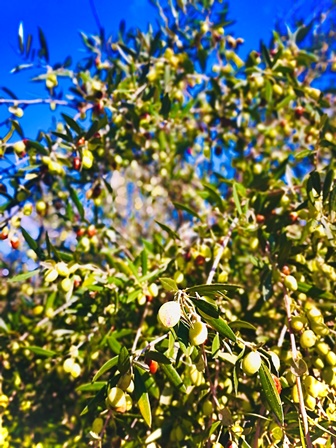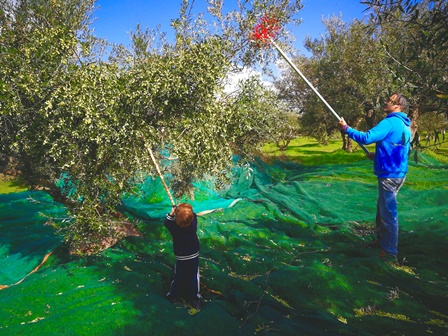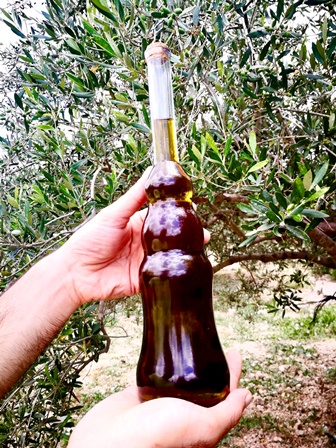Olive Oil
How to produce ?
Olive oil is produced by grinding olives and extracting the oil by mechanical or chemical means. Green olives usually produce more bitter oil, and overripe olives can produce oil with fermentation defects, so for good extra virgin olive oil care is taken to make sure the olives are perfectly ripened. The process is generally as follows:
1. The olives are ground into paste using large millstones (traditional method), hammer, blade or disk mill (modern method).
2. If ground with millstones, the olive paste generally stays under the stones for 30 to 40 minutes. A shorter grinding process may result in a more raw paste that produces less oil and has a less ripe taste, a longer process may increase oxidation of the paste and reduce the flavor. After grinding, the olive paste is spread on fiber disks, which are stacked on top of each other in a column, then placed into the press. Pressure is then applied onto the column to separate the vegetal liquid from the paste. This liquid still contains a significant amount of water. Traditionally the oil was shed from the water by gravity (oil is less dense than water). This very slow separation process has been replaced by centrifugation, which is much faster and more thorough. The centrifuges have one exit for the (heavier) watery part and one for the oil. Olive oil should not contain significant traces of vegetal water as this accelerates the process of organic degeneration by microorganisms. The separation in smaller oil mills is not always perfect, thus sometimes a small watery deposit containing organic particles can be found at the bottom of oil bottles.
3. Modern grinders reduce the olives to paste in seconds. After grinding, the paste is stirred slowly for another 20 to 30 minutes in a particular container (malaxation), where the microscopic oil drops aggregate into bigger drops, which facilitates the mechanical extraction. The paste is then pressed by centrifugation/ the water is thereafter separated from the oil in a second centrifugation as described before. The oil produced by only physical (mechanical) means as described above is called virgin oil. Extra virgin olive oil is virgin olive oil that satisfies specific high chemical and organoleptic criteria (low free acidity, no or very little organoleptic defects). A higher grade extra virgin olive oil is mostly dependent on favourable weather conditions; a drought during the flowering phase, for example, can result in a lower quality (virgin) oil. It is worth noting that olive trees produce well every couple of years, so greater harvests occur in alternate years (the year in-between is when the tree yields less). However the quality is still dependent on the weather.
4. Sometimes the produced oil will be filtered to eliminate remaining solid particles that may reduce the shelf life of the product. Labels may indicate the fact that the oil has not been filtered, suggesting a different taste. Fresh unfiltered olive oil usually has a slightly cloudy appearance, and is therefore sometimes called cloudy olive oil. This form of olive oil used to be popular only among small scale producers but is now becoming "trendy", in line with consumer's demand for products that are perceived to be less processed.
Culinary use
Olive oil is an important cooking oil in countries surrounding the Mediterranean, and it forms one of the three staple food plants of Mediterranean cuisine, the other two being wheat (as in pasta, bread, and couscous) and the grape, used as a dessert fruit and for wine.
Extra virgin olive oil is mostly used as a salad dressing and as an ingredient in salad dressings. It is also used with foods to be eaten cold. If uncompromised by heat, the flavor is stronger.



